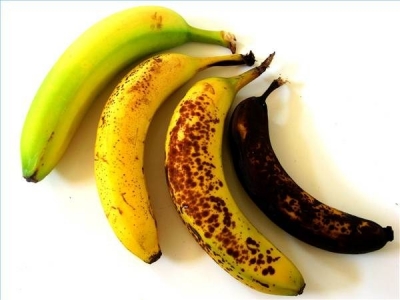

Most of the mushrooms have a cap called pileus and a stem called stipe. The cap on its underside consists of gills which bear the spora producing structures. Important to the identification of a species are the properties of cap, the shape and colour of the gills, the way in which they are joined to the stem, presence or absence of sheath, scales and annulus ring etc. The most poisonous mushrooms are species of Amanita which come under the family Amanitaceae and the most delicious edible mushrooms are species of Agaricus (Button mushroom) which come under the family Agaricaceae. In general the fruit bodies of Amanita species can be distinguished from the Agaricus species by the following characters.
In Amanita species the pileus on its upper surface bears the scales and the stipe bears at its base a sheath called Volva. These scales and sheaths are absent in the fruit bodies of Agaricus species.
Volvariella (Paddy straw mushroom) is also having Volva at the base of the stipe as in Amanita. But it is an edible mushroom and also commonly cultivated. The Oyster mushroom namely Pleurotus is another edible one. This can be identified by its stem at the side of the cap and gills on the under surface of the cap. Boletus (Penny bun mushroom) and Lactarius (milk cap) are also edible members which grow in wild condition but not cultivable. Among these Boletus can be identified by its dense layer of tubes instead of gills on the underside of the cap.
The familiarity in distinguishing the poisonous and nonpoisonous mushrooms is needed only when we collect the wild fungi from the field for our diet table. But this problem will not arise in the case of edible fungi which are cultivated for this purpose.


 Ripening may be regarded as a special case of sequence. During ripening, a number of enzyme-assisted reactions take place inside the fruits. The list includes softening of tissues, hydrolysis, changes in pigmentation, flavour and respiration rate, and conversion of carbohydrates and organic acids into fruit sugars. These changes are induced by ethylene which is also called as ripening hormone.
Ripening may be regarded as a special case of sequence. During ripening, a number of enzyme-assisted reactions take place inside the fruits. The list includes softening of tissues, hydrolysis, changes in pigmentation, flavour and respiration rate, and conversion of carbohydrates and organic acids into fruit sugars. These changes are induced by ethylene which is also called as ripening hormone.
 “Temperature changes can delay or hasten the ripening of banana. Banana is a tropical fruit, adapted to ripen quickly at a certain stage of its development and at a particular temperature and humidity. It continues to ripen after harvest, with more and more of its starch converted into sugars by the action of enzymes. When harvested, a banana contains about 20 per cent starch and only 1 percent sugar. By the time the fruit is ripe, the proportions are reversed.
“Temperature changes can delay or hasten the ripening of banana. Banana is a tropical fruit, adapted to ripen quickly at a certain stage of its development and at a particular temperature and humidity. It continues to ripen after harvest, with more and more of its starch converted into sugars by the action of enzymes. When harvested, a banana contains about 20 per cent starch and only 1 percent sugar. By the time the fruit is ripe, the proportions are reversed.

 Apple contains an enzyme known as polyphenol oxidase (it is a copper containing enzyme).
Apple contains an enzyme known as polyphenol oxidase (it is a copper containing enzyme).



 The flavonoids are fifteen-carbon compounds that are generally distributed throughout the plant kingdom.
The flavonoids are fifteen-carbon compounds that are generally distributed throughout the plant kingdom. Nastic movement is responsible for blossoming of flowers. Usually this movement takes place in a flat plant part oriented relative to the plant body and produced by diffuse stimuli causing disproportionate growth or increased turgor pressue in the tissues of one surface. It normally occurs in leaves and petals which are bilaterally symmetrical.
Nastic movement is responsible for blossoming of flowers. Usually this movement takes place in a flat plant part oriented relative to the plant body and produced by diffuse stimuli causing disproportionate growth or increased turgor pressue in the tissues of one surface. It normally occurs in leaves and petals which are bilaterally symmetrical. Certain flowers such as sunflower are attracted to the sun strongly. They begin the day facing east and then follow the sun. This is because of a phenomenon called phototropism.
Certain flowers such as sunflower are attracted to the sun strongly. They begin the day facing east and then follow the sun. This is because of a phenomenon called phototropism.